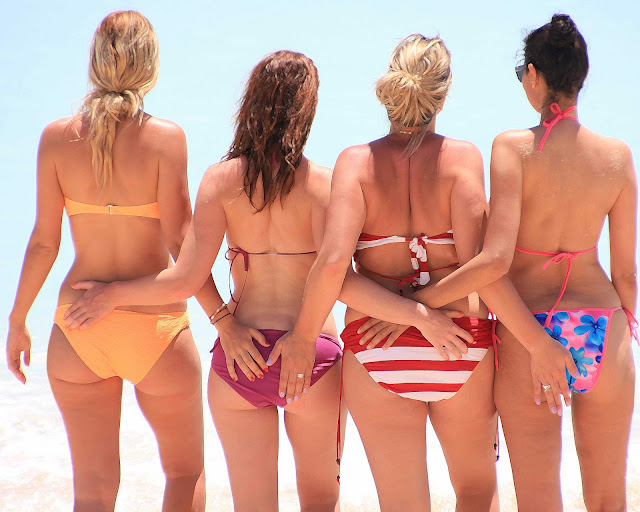Swimwear fashion, like many other clothing types, has significantly evolved over the centuries. In the early 1800s, British women donned full-length bathing gowns, designed more for modesty than swimming. Men actually swam naked until around 1860, when swimwear laws led to the adoption of full-body suits.
 |
| Image credit |
As societal norms began to change, so too did the style and design of swimwear. The turning point was in the early 20th century when shorter, tighter-fitting styles became mainstream, marking the beginning of the modern swimwear industry.
Iconic Brands That Shaped Swimwear
In the wake of swimwear laws, several pioneering British brands emerged. Speedo, founded in 1914 by Scottish immigrant Alexander MacRae, initially focused on underwear before transitioning into swimwear and quickly becoming synonymous with professional swimming attire worldwide.
Another well-regarded brand, Sunspel, was established in 1860. They originally produced high-quality underwear and loungewear. Their pivot to swimwear came much later in the 1940s, but their impact on the market was immediate. They introduced a range of refined, minimalistic men’s swim trunks designer styles that embodied British sophistication while maintaining modesty for men and for women.
Swimwear for All
The mid-20th century saw a radical shift towards body positivity and inclusivity, with brands like Kiniki and Bravissimo leading the charge. Kiniki, established in 1976, championed inclusive sizing and embraced prints, colour, and bold design - a stark contrast to more traditional brands.
Bravissimo, founded in 1995, broke away from standard swimwear sizing, offering designs specifically tailored for fuller-busted women. This commitment to diversity has not only contributed to the popularity of these brands but also inspired a broader cultural shift within the swimwear industry.
Sustainable Swimwear for the 21st Century
The 21st century brought a renewed focus on sustainability, reflected in the rise of eco-conscious swimwear brands. Batoko and Davy J, both founded in the late 2010s, made waves with their innovative use of recycled materials in swimwear.
Batoko’s clothes are made entirely from discarded plastic, and Davy J’s durable designs are intended to combat the issue of ‘throwaway’ fashion. This signals a promising shift towards a more sustainable future for the industry.
The New Wave of Style
Today, the British swimwear market is a blend of tradition and innovation. Brands like Deakin and Blue and Stay Wild Swim continue to redefine what it means to be a modern swimwear brand, merging high-performance design with inclusivity and environmental responsibility.
The heritage of British swimwear is steeped in evolution, inclusivity, and sustainability, and it is these values that will continue to shape the future of the industry. Whether we’re diving into the pool or lounging by the beach, we can do so with the knowledge that the swimwear we’re wearing carries a proud and progressive legacy.
When exploring the history of swimwear, you discover more than just the evolution of styles and cuts; you learn about how British society changed over the 19th and 20th Centuries. The evolution of style, inclusivity drives, and sustainability efforts have shaped and will continue to shape the industry in the future.
Next time you are looking for a bikini, swimming costume, or swim shorts, think about how the changes in our societies as well as in our fashion tastes have helped to shape the style you see in shops today.
